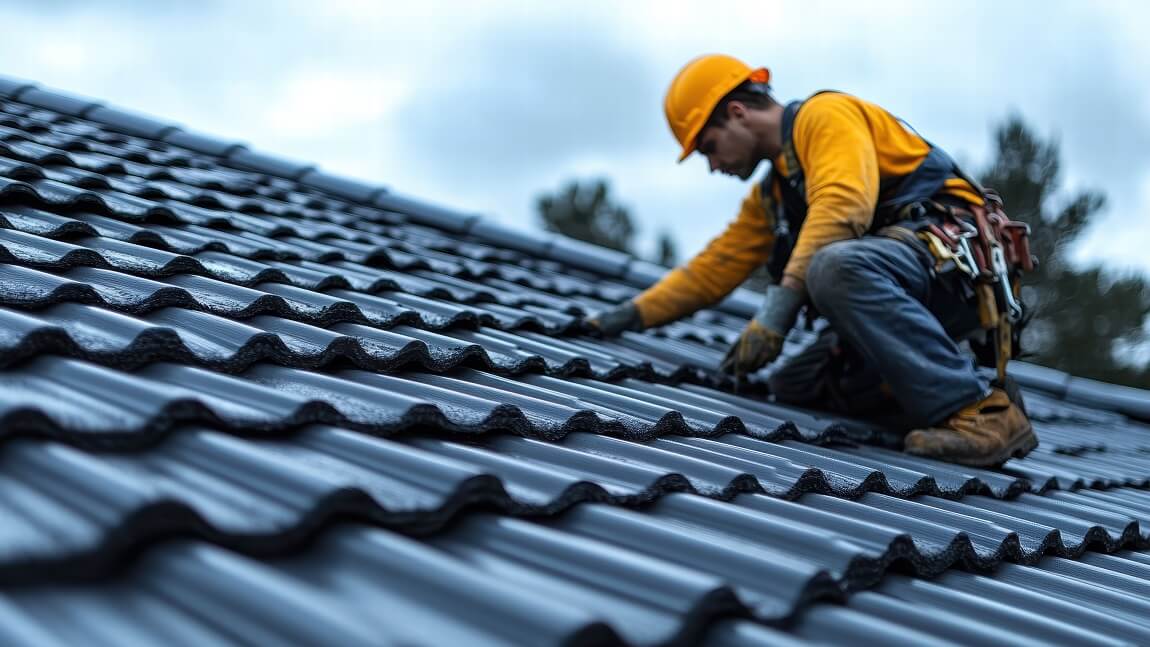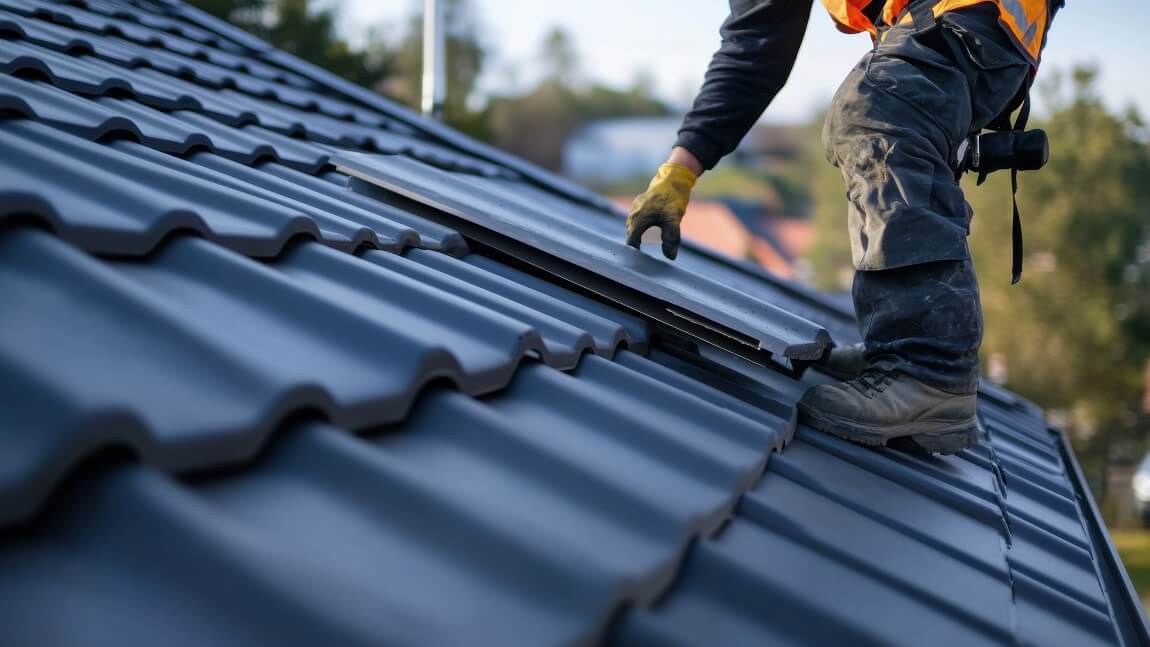Many homeowners neglect regular roof maintenance because they don't know how important it is to keep their roofs from falling apart especially during the hurricane season. This is especially true in Texas and Louisiana, two areas that Roof Squad services. This negligence can lead to serious damage, which can cost a homeowner a lot of money in repairs.
During storms, the most common place where roofs are damaged is when water accumulates on the rooftop. Water can collect on the roof for a number of reasons - water may leak from your gutters or septic system, rain water can soak into poorly maintained tiles, or other substances can get stuck in your guttering. Even periods of mild freezing and fluctuating temperatures can cause ice damming at the base of your roof and stop drainage. If left unattended, trapped moisture can also leak into the home and cause significant damage to the house.
Most roof damage during a storm comes from the accumulation of ice, debris, and water on the roof. If this material is not cleaned up, then it will continue to accumulate, eventually causing the roof to begin to rot, discoloring your roof, and even rusting away at its structural integrity. This can all happen if you don't make sure to keep your roof's free from snow, ice, hail, and debris.
Storms, however, call for a different approach. You must monitor your site periodically and remove potentially harmful material away from your property.
Proper roof maintenance can be done on any kind of roof - metal, wooden or composite, asphalt shingles, etc. - at anytime, but if you have an extremely vulnerable roof, then it is best to call in the professionals. A commercial roof may need more maintenance than a residential one - and you should only work with licensed and insured roofers - but both require frequent inspections before and after a hurricane. It is very important that the workers you choose are certified and insured as well, to ensure that the job will be completed correctly and safely.
Damage to roofs can be caused by a number of sources during a hurricane or any other storm. The most common cause of damage is water leaks caused by broken tiles, shingles, or any other piece of your roofing material. If this is present, it is essential to get the roof repaired as soon as possible so that water does not seep into the home. Other common causes of damage during a hurricane or storm include hail, ice, wind, snow, hailstones, tree roots, hail and tree limbs, hail, roots of plants, fungi, algae and mold, and termites.
During a storm, there are a number of different ways to protect your roof from damage, some of which are quite simple while others require expert knowledge. If you live in a part of the country that experiences heavy winds, it is essential to consider installing hurricane shutters, and possibly a storm door. You can also invest in a gutter guard if your area experiences heavy rainfall. A good roof sealant can also prevent the water from getting into the home by creating an airtight barrier.
Here are some other ways to protect your home's roof during a hurricane:
Place Protective Plywood Or Other Material On Your Roof
Asphalt shingles are one of the cheapest ways that you can use to protect your roof from damage. The biggest problem with asphalt shingles is that they are susceptible to cracks and splits which can lead to leaks, especially during a hurricane. This means that you have to replace the shingles if they ever become damaged. During a hurricane, however, in order to give your roof an extra layer of protection, use plywood as a protective sheet over your roof. Once you do, you need to make sure that it is completely waterproof. Plywood is also more expensive than asphalt shingles, but it can be the most effective way to protect your roof. You do need to make sure that the plywood that you choose has been treated with a water-resistant product, but this will be less expensive than having to replace a roof after a hurricane and will save you money in the long run.
Roof sheets are another way that you can protect your roof from heavy winds and water. They are designed to keep water out of your home, but you must ensure that they are properly installed and that they are properly sealed. Some products will seal the roof completely, while others will only seal the sheet in certain areas. If you purchase an inexpensive roofing protection product like the ones we just mentioned that does not seal well, you may end up having to replace or repair your roof.
Cut Down Trees Around Your Home
There are many advantages to having trees and other natural fixtures outside of your home or business, but that also means that there's an extra layer of care to be had when preparing for a storm with high winds/water.
Because trees, plants, and other debris pose a risk to your roof, it's vital to cut down the trees so that when the inevitable happens, you're ready. Tree branches and fruits hanging from the trees are susceptible to flying off during strong winds and hitting different areas of your home, including the roof. Cutting them down ensures that it won't happen and decreases damage risk.
Remove Material Outside Your Home and Park Cars Inside Your Garage
Before a hurricane, you can remove material or debris outside of your home before the storm arrives so you won't have to spend time doing it after the storm inevitably moves them around. It is sometimes prudent, depending on the amount of material outside your home, to spend money removing it or trying yourself. It is important to note that some of the material is heavy so it will take more time and energy to clear it out of your home's yard than if you were to simply pick up any junk you happen to find lying around before the storm hits. It is also advisable to leave most of your home un-decorated before a hurricane even comes because it will only result in more damage. For those who are going to be leaving the majority of their home in one piece, you should consider adding some hurricane shutters to the windows and doors as well.
Your cars also need to be cared for, so parking them in your garage will prevent damage to your car and will prevent accidental car-inflicted damage to your home.
Roof Repair and Maintenance
One of the last things you can do to protect your roof are to repair any leaks on a regular basis. This includes inspecting for holes in the roof to determine if the roof has been leaking. If you suspect any holes, get them fixed. If you notice that the roof is leaking water, have the gutters checked regularly to check for blockages.
If your gutters are clogged, having the gutter guards checked often is important. If it is clogged, it's necessary to remove the debris and repair the problem. To prevent damage to your roof during a storm, take the time to perform a comprehensive leak detection and repair inspection.










